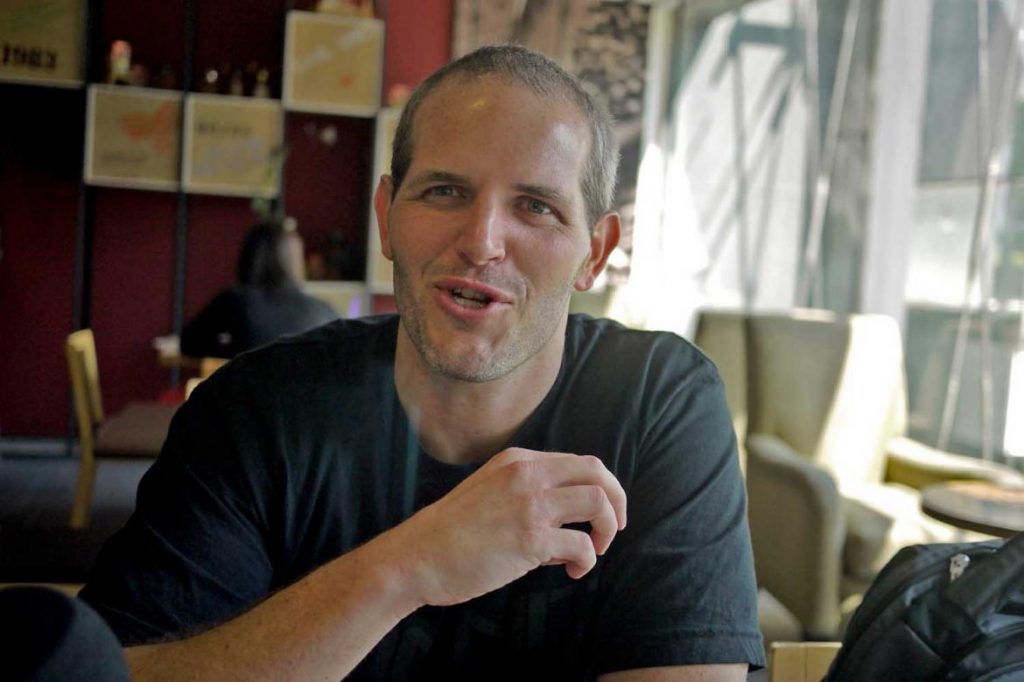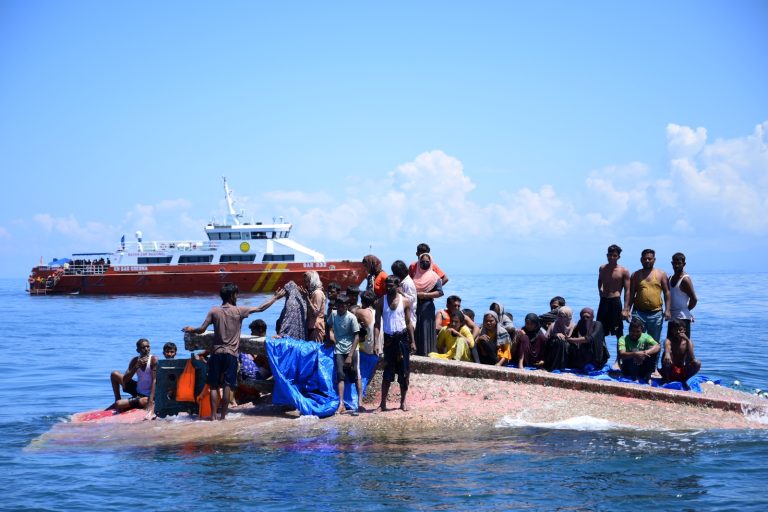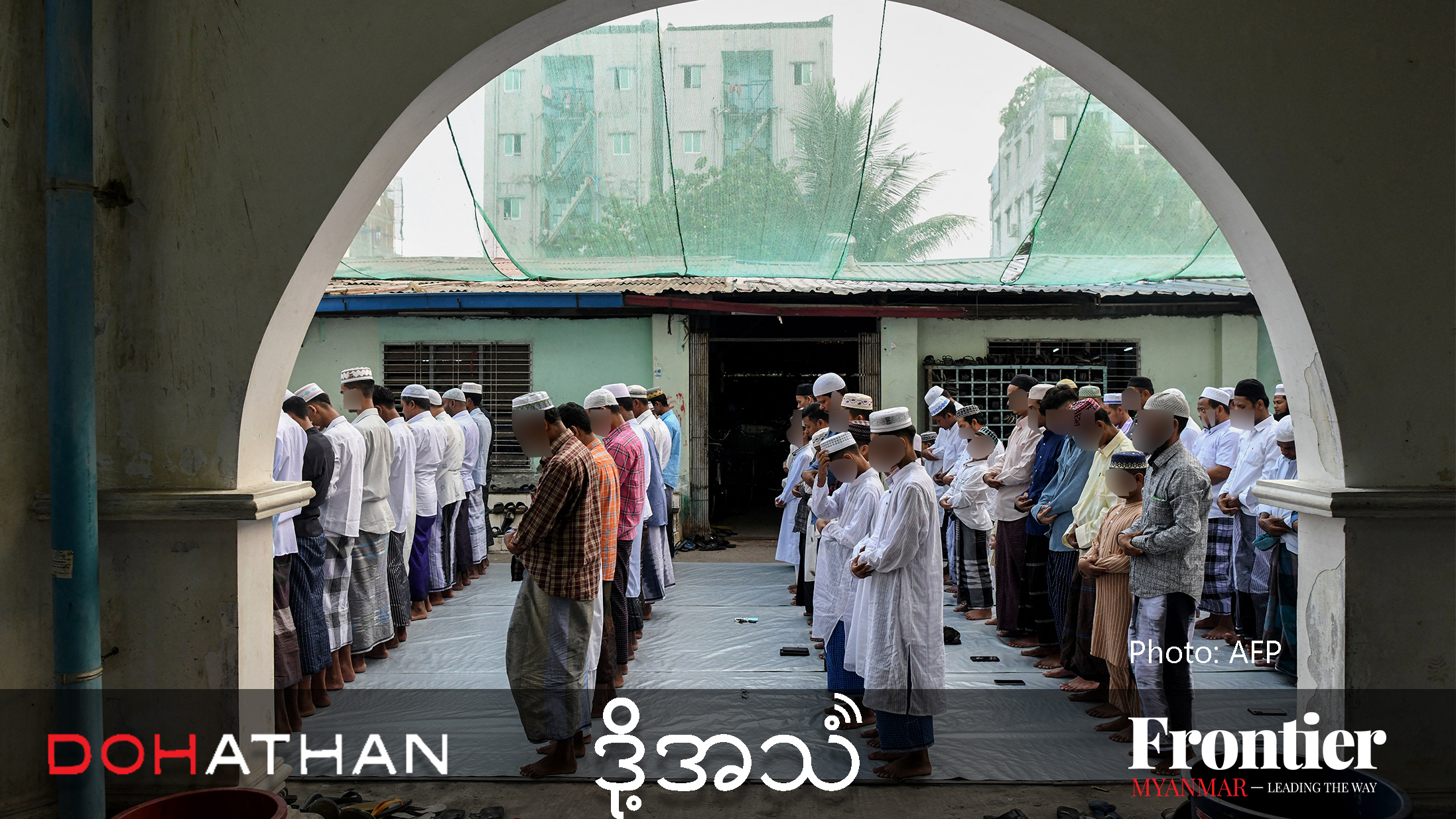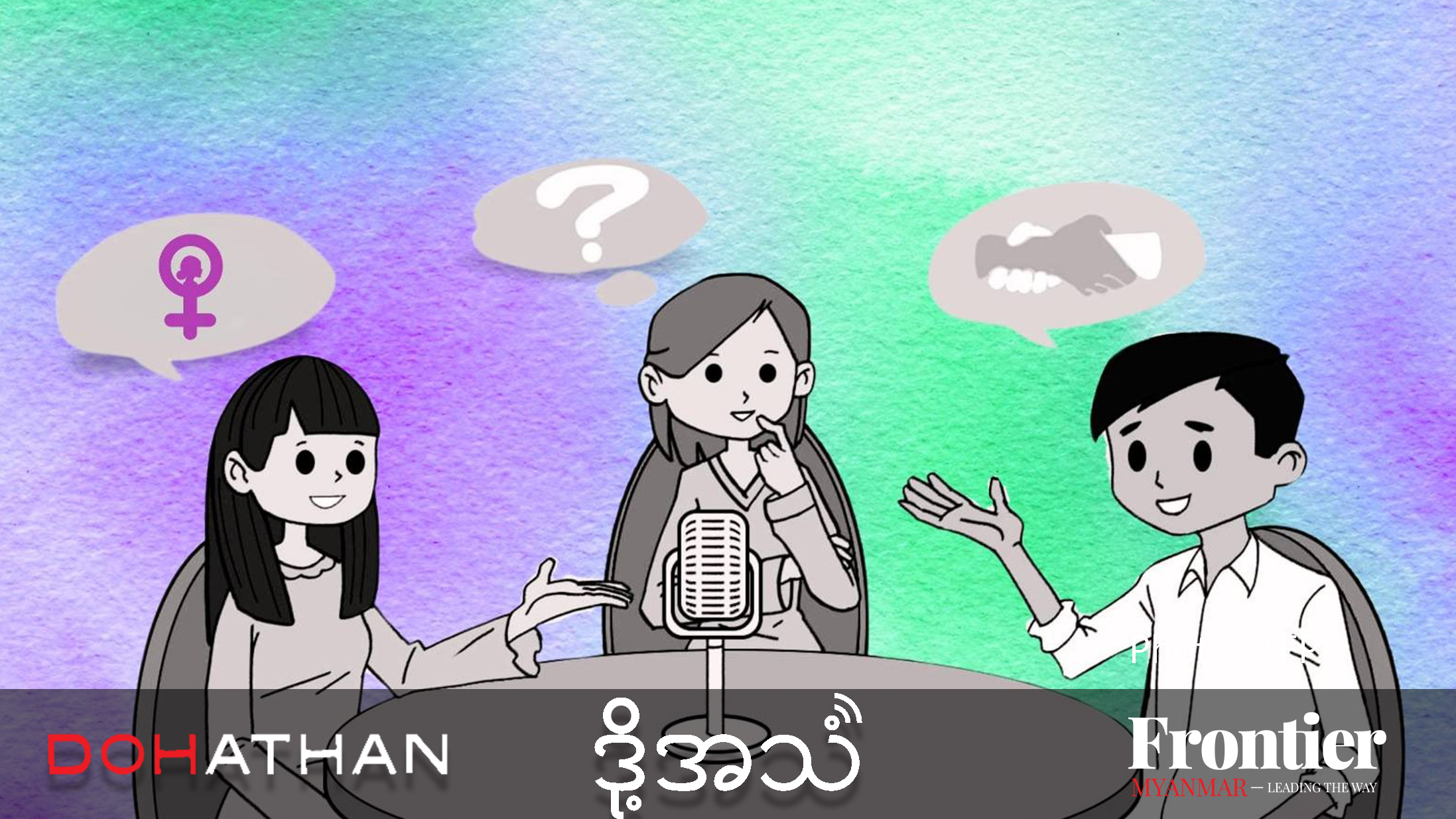Much of the attention in Myanmar’s transition has been focused on the country’s former military government and its pro-democracy movement. Dr Matthew Mullen, author of the recently published Pathways that changed Myanmar, argues that the smaller community-level movements also had a significant impact on political changes in the country in recent years. Mullen spoke to JusticeInfo about the impacts of sanctions, how the top-down transition could be a threat to community-level movements and the role played by the so-called “third force”.
How would you describe reconstructive politics in Myanmar?
While going around Myanmar and looking at the various pursuits of change that were underway, I saw a realm of action that was kind of hard to explain. You had the traditional protests, very strong, and then you also had a lot of everyday resistance.
In nearly every community you walked in, there was some type of organisation or some kind of local project. I found that people driving these projects were using a mixture of engagement and avoidance. The goal was to try to change the situation around them by creating new opportunities.
Remittances – money coming in from the Burmese migrant workers overseas – was a big part of the action. They created a situation where people were able to do what they were unable to do a few years before. There was so much creation going on.
Then I came into contact with the third force, the big organisations of the third force – one of the most notable and controversial being Myanmar Egress. They were doing strategic engagement, opening up space and creating new opportunities.
Reconstructive politics was an attempt to try to frame the many levels of creation as a way to gain leverage, because I did not feel that there was anything that really captures that in terms of the theories I came across.
As a whole in Myanmar, would you say the politics of sanctions was inefficient compared to reconstructive politics?
Support more independent journalism like this. Sign up to be a Frontier member.
I don’t think it was inefficient, but I think there is a narrative around sanctions that is slightly dishonest. The different modes of resistance were all incredibly important and in many ways mutually reinforcing. But there were situations like sanctions where attempts to support the struggle against the junta created new challenges and obstacles.
Sanctions were contradicting what the third force and many local communities were trying to accomplish. Where I think sanctions were most problematic was under the narrative of “sanctions were fulfilling the will of the people”.
You did not have to go far to find individuals who did not want to have anything to do with sanctions. They did not see sanctions as effective or strategically advisable. So, this whole idea that sanctions were rolled out to mobilise or to support the people is a kind of false narrative.
A lot of people were looking for every possible opportunity, for new resources, new ideas, anything to hold onto. They saw sanctions as another obstacle to overcome, as another isolation they had to navigate in order to seek new openings. They also saw sanctions as emboldening the regime, when they were working to soften the impact of the state.
Sanctions were not fulfilling the will of the people, sanctions were fulfilling the will of some people. Being clear about that is crucial because it forces us to consider alternative views, and it requires an honest assessment of implicit harm sanctions may do.
Daw Aung San Suu Kyi played an important role in all of this. She approved the sanctions, legitimising them in the eyes of the international community. Given her international profile, can we say that she monopolised the voice for change?
There are reasons to be critical of her on that front, but I don’t know if she monopolised the narrative, becoming the voice of the people, or if the voice was put on her. You had Free Burma campaigns and governments around the world who were promoting the sanctions, pointing to Aung San Suu Kyi and saying, “The Lady supports this and therefore it is legitimate.”
But I think she has some responsibility with that. She could have stepped back and said: “I support sanctions, but that does not mean everybody supports sanctions.” But for most of that period, she was under house arrest, so I don’t know to what extent she could have been able to bring that kind of nuance and de-monopolise the voice.
The problem is that she became a very convenient voice to turn to. My critic is that she could have done more, by saying: “This is my perspective, there are other ways to look at it.” That would have made a world of difference for the groups who were trying to take different approaches and felt as though their perspectives were being dismissed entirely.
For many years there was a debate about sanctions versus constructive engagement. According to your research, what finally brought political change in Myanmar?
Actually, we don’t know and to me, that’s the point. I take issue with the notion that it was sanctions that brought changes. It was not one thing. It was probably a combination of various efforts. I wrote in the book that the pathways to change were super-messy and that is part of what made the cumulative impact so notable. They converge, they diverge. You had so many pressures, you had infiltrations, you had all types of things going on around the regime.
The transition manifested from above, but that “from above” change happened because the conditions around the country and around Nay Pyi Taw shifted massively: the dissolution of power, the different pressures at play. All these shifts combined to change the environment of governance.
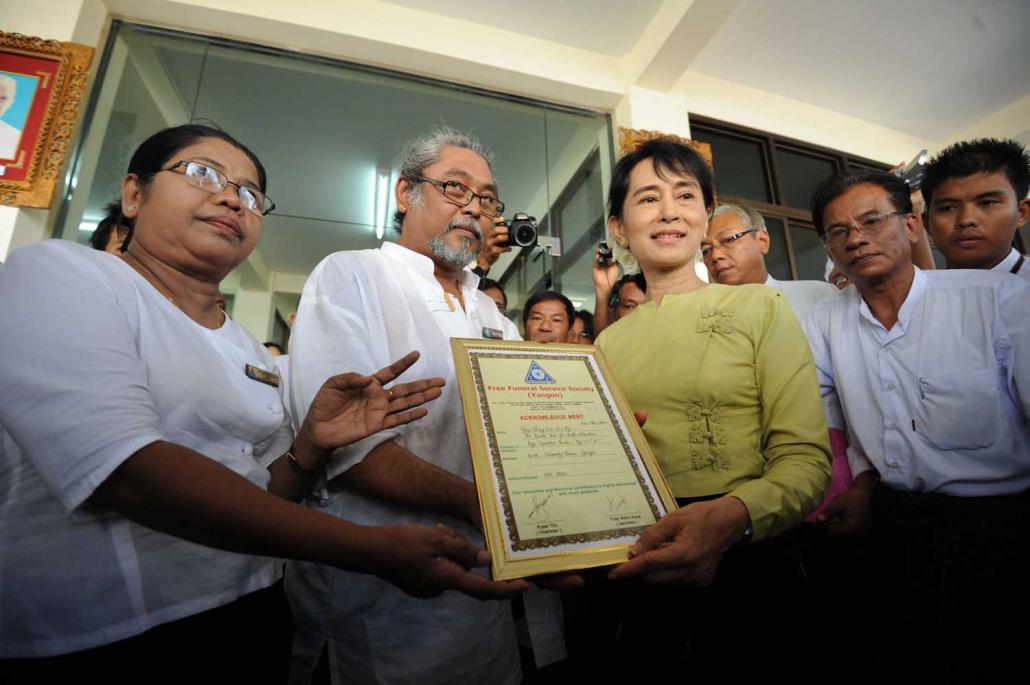
Daw Aung San Suu Kyi accepts an acknowledgement letter at a ceremony to commemorate the 10th anniversary of the Free Funeral Service Society group in Yangon in April 2011. (AFP)
What is unfortunate in the story is that rather than seeing the value in different efforts and in different strategies, some of the actors say, “Our strategy was better than yours,” which goes straight to the hierarchy mindset: “This is the right way.”
If there would have been a little more room for recognition around contrasting strategies, if different groups saw the value in the different strategies, there could have been more coordination, more mutual benefit and far less tension.
As you said, change came from above. This has advantages, mostly the absence of violence. But does it have also drawbacks?
Absolutely. The scariest thing about the from-above transition is that it has a bulldozing effect on all those grassroots forces that became so strong over the years, all of those organisations and community-based efforts that found ways to create opportunities and space. These grassroots progresses can be bulldozed by the from above forces who say: OK, now things are changing, we are taking control, and this is where we are going, dictating the transition from above.
The other scary thing is that this transition is legitimating a system which is still extremely predatory. The amount of power that the military still has, the distribution of land, the lack of welfare and public services along with rising costs of living, the lack of protection for people who do not have formal documentation of their land, possessions and projects, the predatory laws – legitimating all of this puts the population in a very vulnerable situation.
The system may appear more structured and the leadership may be different, but this doesn’t make the impact less insidious. This is the same machine in a new package.
Tracking the story of change on the ground, we can see how laws are protecting predatory power rather than protecting people from predatory power. The inability to acknowledge this is also terrifying. This idea that you have to get behind the law because it is the law, is the dumbest thing.
Nobody argues against the importance of the rule of the law, but we have to make distinctions between what aspects of the law are protecting people and what aspects of the law are formalising repressive and oppressive dynamics. The formalising exercise that is underway cannot be taken lightly because it is going to decide the long-term fate of a lot of people.
Under the military regime, there were decades of atrocities. What will happen now?
This is where the first thing that comes to mind for me right now is plight of the Rohingya and the general xenophobia in transitioning Myanmar. Before Myanmar has space to take a proper account of the past, there are some serious issues that need to be dealt with right now.
When it comes to the transitional justice question, one of the things we have to define is what the people on the ground want. What does transitional justice mean to them?
People I spoke with say repeatedly: We don’t want the Cambodia model. This idea of so much attention and resource going to putting select figures on trial, while most of the population continues to face the wrath of poverty and oppression. The military definitely wants a transition that only looks forward.
For those who want a transition that reckons with the past there is the immediate task of addressing the ongoing violent xenophobia, bringing the attention back to the decades of military rule that need accounting for. Then the task becomes understanding different priorities and concerns when it comes to dealing with Myanmar’s junta past.
In 2012, the UN special rapporteur on human rights in Myanmar, Tomas Ojea Quintana, called for the establishment of a ‘truth commission’. What do you think about it?
From a mechanism perspective, it makes sense why you want a truth commission, and why that could potentially be good for Myanmar. The biggest problem is that there has been no effort to figure out what people want.
It is like jumping into this transitional justice machine, before we have any type of discussion about people’s priorities, what are their concerns, what kind of ideas do they have? It is like the United Nations is dictating the transition by defining the model.
The real concern is that the bulk of attention and resources start going to the truth commission while we are still asking what the people of Myanmar want. That is the real threat; this kind of “from above” and in some ways aristocratic mentality of, “This should be good for Myanmar.”
This notion of “speaking for others” instead of letting people speak for themselves, that you evoke several times in the book…
Yes, it is a good example of that. Quintana has the best interests of everyone in mind. He is not doing something that is appalling, but it is very implicitly silencing people. It takes time, reflection and patience to let people speak.
The desire to move forward into some type of transitional justice process is totally understandable, but this type of early proposal for a particular intervention automatically forecloses on the conversation. It is like the conclusion of a conversation which never happened.
This transition has to be built on the voices of the people. There must be some kind of outreach effort before we can say what transitional justice in Myanmar should look like.
Assigning the model is dictating transitional justice instead of facilitating it.
How can we explain that a number of pro-democracy activists are condoning, or even applauding, the targeting of the Rohingya in western Myanmar?
For so long, the pro-democracy movement in and around Myanmar was seen as very pure, as inherently righteous. There were not many questions about whether there were undercurrents of discrimination, or sexism or whatever.
When you have these massive civil society forces with a notable pro-democracy and human rights record, and all of a sudden, they are justifying, apologising or even partaking in this violence (against Rohingyas and Muslims), it takes people off-guard.
Part of the problem here, beyond the obvious spread of xenophobia, is the positioning of human rights or democracy advocates as infallible, or inherently good, creating complacency and an absence of accountability.
The other part of the problem is the dynamic where members of civil society in Myanmar try to reposition what is outright xenophobia as something that is technical or debatable.
I don’t want to assign hate or complicity where it doesn’t belong, and there are certainly portions of Myanmar’s civil society who want to take a stand but do not see openings to do so. But when members of civil society advance a vision of Myanmar with narrow or no space for Myanmar’s Muslim populations, when civil society creates an enabling environment for perpetration, they are directly contributing to the atrocities.
This article was first published on Justiceinfo.net and has been republished here with the author’s permission. JusticeInfo is a media outlet established and operated by the Swiss NGO Fondation Hirondelle. TOP PHOTO: Arnaud Dubus | JusticeInfo


